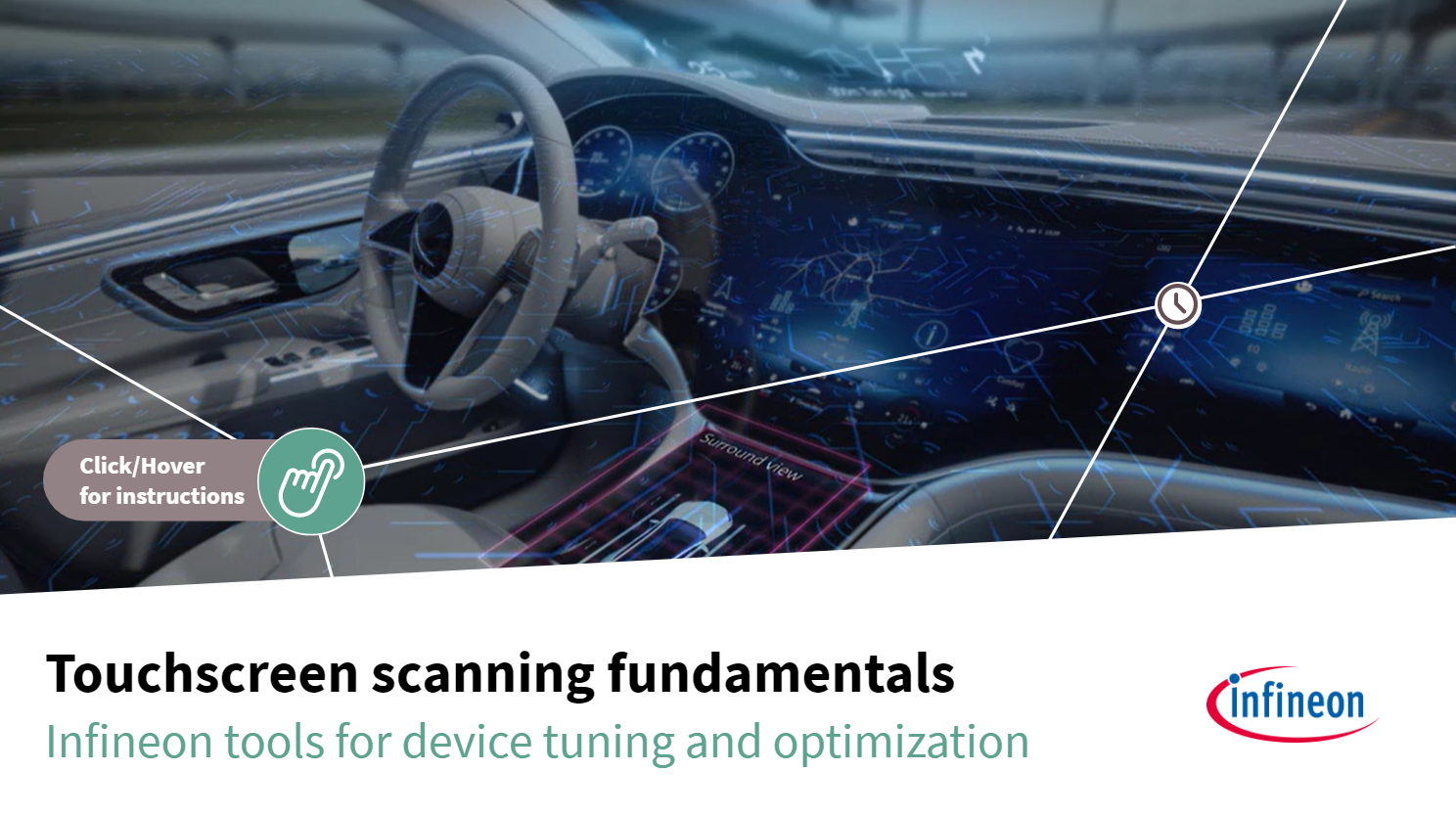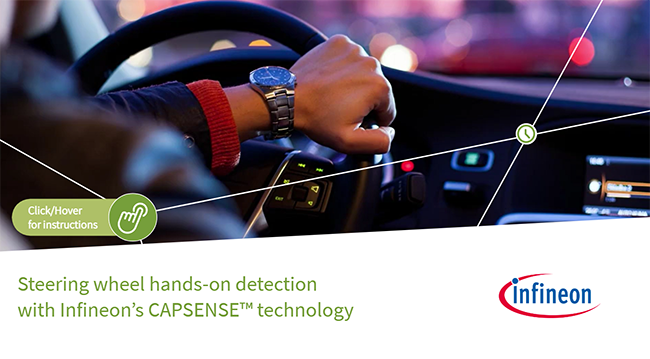32-bit PSoC™ Automotive Multitouch Arm® Cortex®-M0
Overview
Automotive multitouch a robust and reliable operation in the most challenging environments
32-bit PSoC™ Automotive Multitouch Arm® Cortex®-M0 subcategories
Collapse all subcategories Expand all subcategoriesToday's touchscreen devices face tough environments. With displays becoming noisier and devices being used in harsher conditions, providing high-touch performance demands a tougher touchscreen controller. PSoC™ Automotive Multitouch touchscreen controllers leverage the industry's broadest capacitive touch IP portfolio to deliver a new standard for performance to automotive touchscreens.
PSoC™ Automotive Multitouch portfolio overview
The Automotive Multitouch family offers solutions for single touch, two-finger touch, and full multi-touch capability for screen sizes up to 15-inches diagonal. Multitouch™ controllers deliver a best-in-class user experience:
- Unmatched waterproofing capability
- Thick glove and CAPSENSE™ button support
- Fast refresh & scan rates
- Low power consumption
- Excellent accuracy & multi-finger linearity
Families
- Application: Touchscreen, Slider, Touchpad
- Waterproofing: Works with water droplets, condensation, sweat, and wet-finger tracking
- Tracking with up to 5-mm-thick gloves or thick overlay
- 48 TX/RX Pins with 17 receive channels
- Packages: 100-TQFP, 64-TQFP, 56-QFN
- Application: Touchscreen, Slider, Touchpad
- Waterproofing: Works with water droplets, condensation, sweat, and wet-finger tracking
- Tracking with up to 5-mm-thick gloves or thick overlay
- 88 TX/RX Pins with 54 receive channels
- Packages: 128-TQFP, 100-TQFP
- Application: Touchscreen, Slider, Touchpad
- Waterproofing: Works with water droplets, condensation, sweat, and wet-finger tracking
- Tracking with up to 5-mm-thick gloves or thick overlay
- 72 TX/RX Pins with 21 receive channels
- Packages: 128-TQFP, 100-TQFP
- Application: Touchscreen, Slider, Touchpad
- Hover, Force Sensing, Haptic, Acoustic, and wet-finger tracking
- Tracking with up to 5-mm-thick gloves or thick overlay
- 103 TX/RX Pins with 64 receive channels
- Packages: 128-TQFP, 100-TQFP
Training
Support







